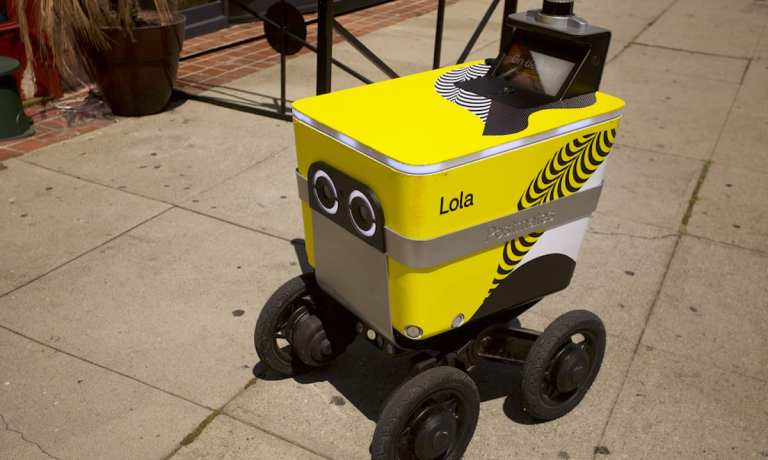
Postmates/Uber is spinning out its robotics arm, focused on last-mile delivery. The trend is inexorable: Get ready for the rise of the machines, at the literal doorstep. No one wants to touch anything they don’t have to. Not now, not even as vaccines are rolling out.
It may be the case that the pandemic is the tailwind that brings robotics more fully into the mainstream, where circuits and metal and plastic do the jobs that flesh and blood once did. Time, then, for a transformation of the last mile, to the last mile …unmanned.
Reuters reported on Tuesday (Mar. 2) that Postmates’ robotics operation is being spun out into a new form, to be called Serve Robotics. Postmates was acquired by Uber Technologies in 2020. Serve has closed a funding round, according to the newswire, which was led by venture capital outfit Neo with participation from Uber.
“While self-driving cars remove the driver, robotic delivery eliminates the car itself and makes deliveries sustainable and accessible to all,” said Ali Kashani, co-founder and CEO of Serve Robotics, in a release. The delivery bot has been known as Serve, and has been termed a “sidewalk robot.”
The investment and spinoff moves were presaged earlier this year when Uber said it was seeking investors in order to separate and launch the division, which up until now been known as Postmates X, where Uber maintains a 25 percent stake. Uber has had a history of carving out or selling units that might not necessarily have been focused on activities like ride-hailing or freight. For example, it exited the scooter business known as Jump.
It’s not a stretch to imagine that platform firms such as Uber would be battening down the hatches and looking to boost operating results (and move more solidly toward profitability). And maintaining at least some stake in the robotics operation means that Uber still sees some financial return when (or if) profits are in the offing.
Automating The Food ‘Chain’
We note, however, that the food/restaurant space is moving toward some level of automation. Robots are emerging to tackle a wider range of kitchen tasks, per a recent report in this space spotlighting robot-powered kitchens. Robots are even being used to prep food and act as waiters.
More generally, and with a nod toward robots at the last mile, Amazon was reportedly expanding testing of its delivery robot Scout, sending it into areas where human delivery staff might be vulnerable to COVID-19. And it’s not just about sidewalks as a means to package delivery: The Federal Aviation Administration, as reported earlier this year, is letting commercial drone-maker American Robotics operate drones without on-site pilots. The drones may only fly at altitudes lower than 400 feet, a regulation that will apply to the testing for which American Robotics won approval.
Welcome, then, to the dawn of the “bring it to me” economy. As Karen Webster noted in a recent commentary, surveys have shown that consumers are opting, and preferring, to have items handed off to them directly at home, despite the fact that curbside and in-store pickup are free. It’s no contest: They choose “bring it to me” by a factor of three to one.
Increasingly, though, we’ll open the door to find a friendly … something, and not someone … wheeling packages up to the front door.